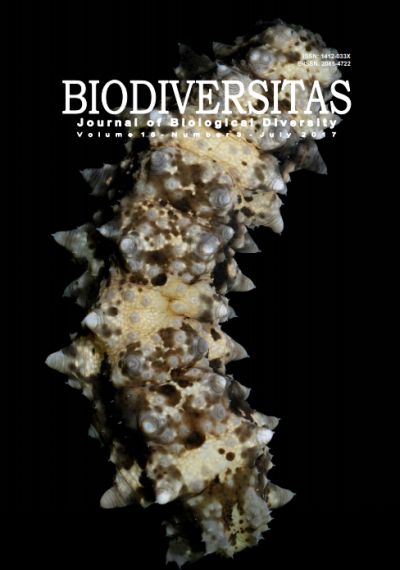Breeding behavior of different raptor species in human modified landscape
##plugins.themes.bootstrap3.article.main##
Abstract
Withaningsih S, Parikesit, Iskandar J, Megantara EN. 2017. Breeding behavior of different raptor species in human modified landscape. Biodiversitas 18: 1234-1242. Raptors are important birds which sensitive to environment and mostly used as best indicator for knowing the health of the ecosystem. The breeding period is a critical phase for raptors and seems to be difficult leading to the status of those birds as an endangered species. The nest site selection is of importance to the success of raptor nesting program. Of this reason, the use of human-modified landscape as one of nesting location for raptors, located in Panaruban and Telaga Warna landscape, West Java, Indonesia has been assessed to know the breeding behavior among raptors. The aim of the study was to analyze the nest site, nesting period, and nest placement of raptors in human-modified landscape in Panaruban and Telaga Warna. The relationship among raptor nest occurrences was analyzed using four circular buffers at distances of 250, 500, 750 and 1000 m around each nest-tree. Data was collected by descriptive analysis and Geographical Information System (GIS) mapping. The four species of raptors i.e. the Javan Hawk Eagle (Nisaetus bartelsi syn. Spizaetus bartelsi), the Changeable Hawk-eagle (Nisaetus cirrhatus syn. Spizaetus cirrhatus), the Crested Serpent Eagle (Spilornis cheela), and the Indian Black Eagle (Ictinaetus malaiensis) showed to select nesting sites in different places. The landscape structure at different scales around the nest may contribute to the varied characteristics of nest site selection. The raptors had a different time of the breeding period in the same landscape. These differences might be a part of the strategy to decrease competition among raptors.
